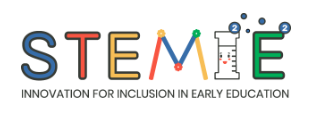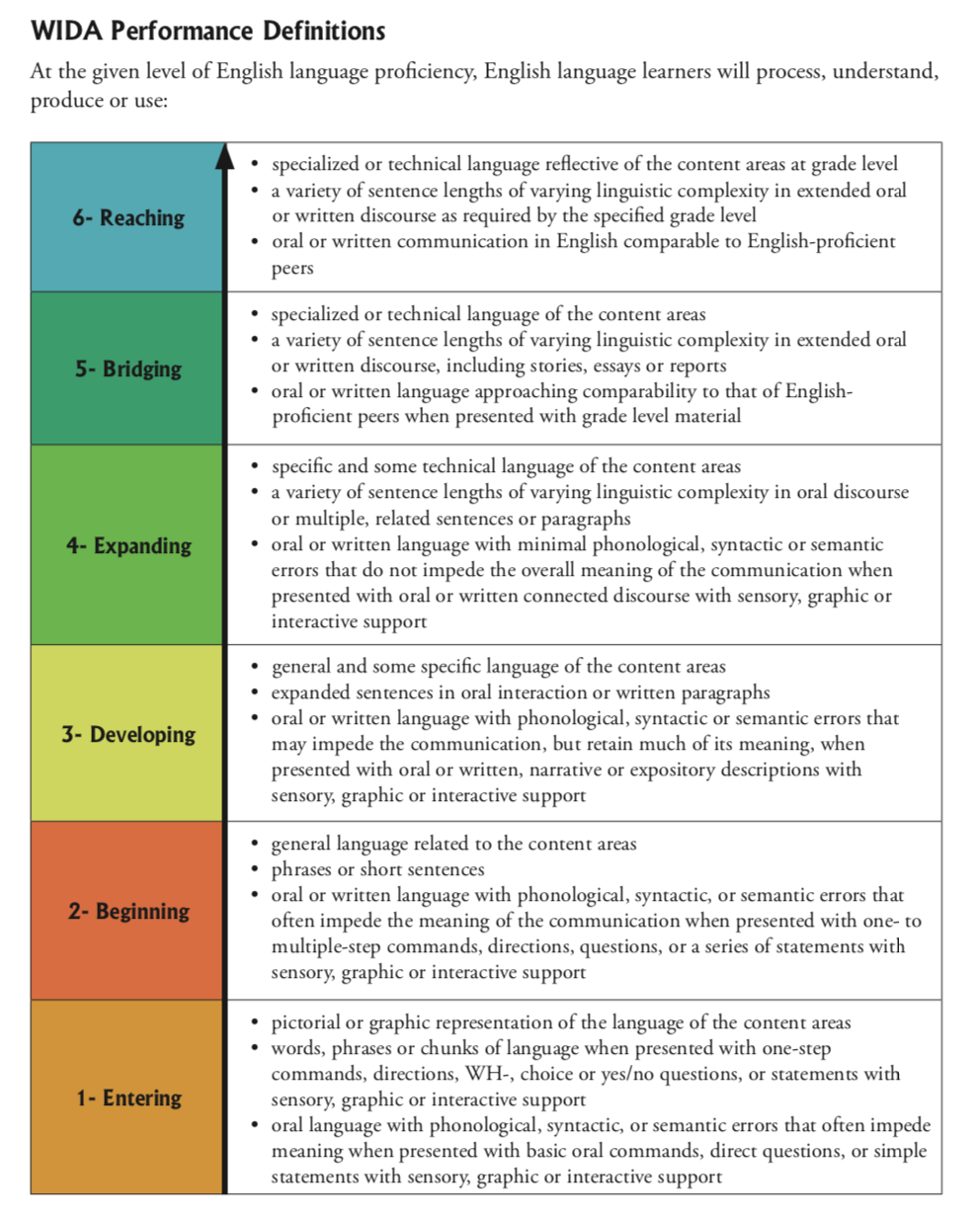January 2020 Update
In this issue:

Happy New Year! This month's newsletter is devoted to resources for teachers! The Office of Early Childhood and Family Education provides resources and information to support children and families birth to age 8. On our main Oklahoma State Department of Education Early Childhood page, you will find links to Standards, Frameworks, past newsletters, the Oklahoma Dyslexia Handbook, RSA, and resource sites.
The early childhood resource site is divided into the following sections: early reading foundations, mathematical foundations, research, publications, resource agencies, educators and administrators, and parent resources.
|

STEM (science, technology, engineering, and mathematics) learning opportunities for young children are an essential component of early childhood education as it combines the intentional integration of content with in-depth inquiries meaningfully embedded into children’s real world contexts. Early STEM experiences should include exploratory learning, allowing children to learn content through the processes of inquiry. The STEM experiences teachers provide for young children can involve a variety of learning materials, including children’s literature, consumables and manipulatives, and web-based resources. This NAEYC article, Growing in STEM, offers suggestions and examples to guide teachers’ selection of classroom STEM resources and materials.
The STEM Innovation for Inclusion in Early Education (STEMI2E2) Center shared these "Five Things to Know about STEM Learning in Young Children."
1. Children can develop the foundations for STEM learning right from infancy.
Children are active learners in the infant, toddler, and preschool years. They explore their environments and learn things from doing, seeing, touching, and hearing. Early STEM experiences can tap into their natural curiosity and give them opportunities to be engaged participants in their own learning.
2. Engaging in early STEM learning activities raises later reading, writing, literacy, and math scores.
Research has shown that teaching science in early years is associated with gains in mathematics, early literacy, and reading (Paprzycki, et al., 2017) and early mathematics learning is a strong predictor of later achievement in multiple domains (Center for Advancing Discovery Research in Education; Duncan, et al., 2007; Claessens & Engel, 2013; Aubrey, Dahl, & Godfrey, 2006).
3. There is a STEM opportunity gap for vulnerable children.
Children who live in poverty, children who are members of linguistic and ethnic minority groups, and children with disabilities have fewer opportunities to engage in STEM learning activities than their peers. This opportunity gap continues to widen as children move through elementary, middle, and high school.
4. Children with developmental delays and disabilities are especially denied opportunities to learn STEM.
School-age children from the ED’s Office for Civil Rights’ Civil Rights Data Collection (CDRC) showed the disparity in STEM opportunities for older children with disabilities, namely that they represent only a very small percent of students enrolled in Biology, Algebra II, Chemistry, and Physics courses. Although there is little to no research on STEM learning for young children with developmental delays and disabilities, there are signs that these children are left out of the scant STEM learning experiences in early childhood settings.
5. Many early childhood teachers need more supports to build the foundations of STEM learning, especially for young children with developmental delays and disabilities.
Many early childhood teachers are not eager and prepared to engage children in rich STEM experiences that lay the groundwork for later success in school and in the workplace. Beliefs that STEM content areas are “less central” or “too difficult,” “advanced,” and “abstract” or “developmentally inappropriate" for some children constrain teaching practices.
Learn more about STEM and STEMIE at their website.
|
The WIDA Consortium (formerly World-Class Instructional Design and Assessment) is an educational consortium of 40 state departments of education. Oklahoma is a member of the WIDA Consortium. Here is a two minute video describing the Can-Do Philosophy - the foundational belief that every learner brings valuable contributions to everything they do.
The Can Do Descriptors can help educators see what English Learners (ELs) can do with language in different situations, and in different content areas, throughout their journey toward English language proficiency. The descriptors provide examples of content language use by students in Kindergarten through Grade 12, in the domains of Listening, Speaking, Reading, and Writing, at each level of proficiency, from Level 1 (Entering) through Level 6 (Reaching).
For Pre-K and early child care, the WIDA Early Years Can Do Descriptors (ages 2-5) provide examples of what dual language learners (DLLs) can do at various stages of language development.
The Can Do Descriptors highlight what language learners can do at various stages of language development as they engage in the following contexts:
- Early care and education (ECE) English and Spanish language development
- K-12 English language development
- K-12 Spanish language development
The descriptors can help educators interpret results from WIDA language development assessments and identify ways to design opportunities for Dual Language Learners’ meaningful participation in learning environments where the language of interaction is English.


The National Championship of Reading Registration is Open NOW The Kickoff is January 6, 2020!
READBowl is the FREE nationwide reading competition for Pre-K through 8th grade classrooms designed to inspire students to read and provide teachers with a free platform to motivate students to increase reading minutes in school. Beginning the week before the College Football National Championship READBowl culminates with the crowning of the National Reading Champions on Super Bowl Sunday! For more information, access information at the official ReadBowl site. Thanks to Jason Stephenson for sharing the contest information.
|
The Oklahoma Reading Sufficiency Act—or RSA—helps ensure that by the end of third grade, each student has the opportunity to develop strong foundational reading skills needed to be successful in fourth grade and beyond.
Parents are a child’s first teacher, and building literacy starts in the home even before children enter public school. Beginning in kindergarten, children will be assessed to determine their reading skills. Parents/caregivers need to be familiar with RSA and the supports available to them and their child(ren) during the early grades, when reading development is critical to future academic success.
Melissa Ahlgrim , Director of RSA, has made a great one page PDF guide for families to help understand and explain RSA. You can find the guide at this link. For more information on RSA, access the Oklahoma State Department of Education RSA page.
Presidential Awards for Excellence in Math and Science Teaching
K-6 Self-Contained, Special Education, Math, Science, Computer Science, and Engineering teachers are eligible for this year's Presidential Award for Excellence in Math and Science Teaching.
Anyone – including principals, teachers, parents, students, business leaders, or members of the general public – may nominate exceptional mathematics or science teachers who are currently teaching grades K-6 for the 2019-20 award year.
Teachers may also apply directly on the PAEMST website.
March 1, 2020: Nomination Deadline! The sooner you nominate, the more time the nominee will have to prepare an application.
- If a teacher will be applying for science and/or engineering, nominate them in the science category.
- If a teacher will be applying for math and/or computer science, nominate them in the math category.
- Unsure which category to use to nominate a teacher? Nominees can choose their application category when they confirm their nomination.
May 1, 2020: Application Deadline
The Presidential Award for Excellence in Mathematics and Science Teaching (PAEMST) is the highest honor bestowed by the United States government specifically for K-12 mathematics and science teaching.
For more information, please visit the PAEMST website.
|